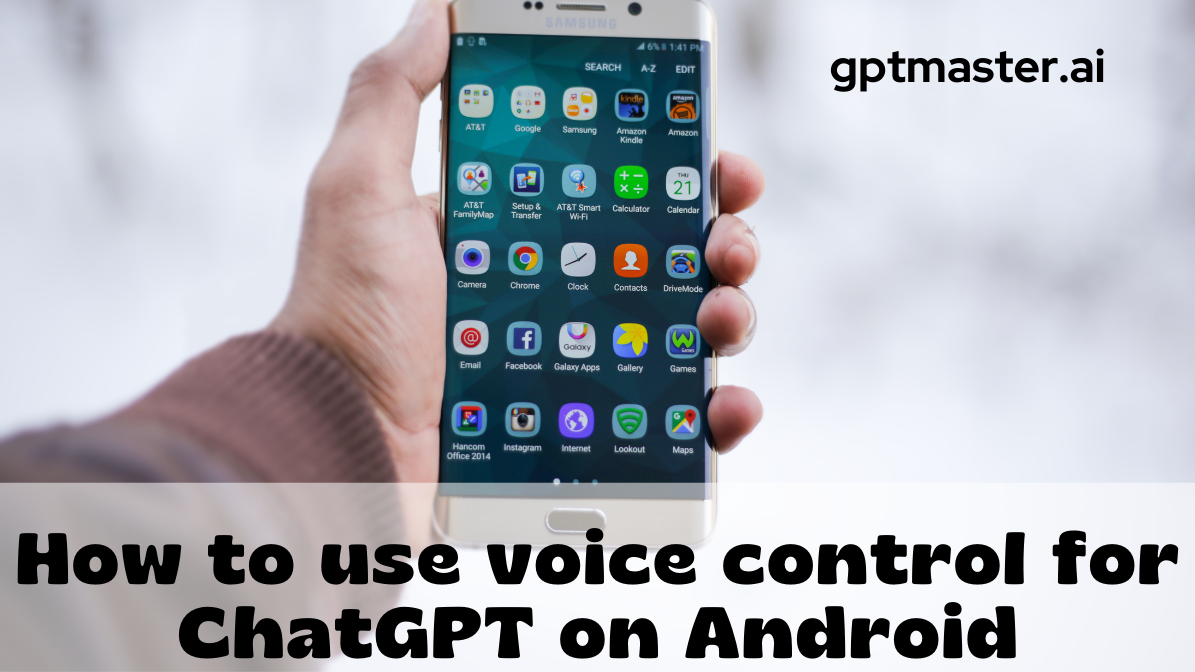Are you interested in optimizing your ChatGPT experience on your Android device? Voice control presents a convenient and effective approach to interact with ChatGPT effortlessly using your smartphone or tablet. Within this article, we will delve into various techniques for utilizing voice control with ChatGPT on Android, granting you the freedom to engage in hands-free and uninterrupted conversations. In this article allow me to guide you through the process of How to Integrate Voice Control for ChatGPT on Android.
Also read: How To Use Voice Control For ChatGPT
Technique 1: Tasker and Voice Chat ChatGPT
Tasker is a popular Android automation app that enables you to automate tasks on your device. By combining Tasker with Voice Chat ChatGPT, you can easily set up voice control for ChatGPT. Here’s how:
- Obtain the API key: To use Voice Chat ChatGPT, you’ll need to acquire the API key from OpenAI and ElevenLabs. These keys are necessary to establish the connection between Tasker and ChatGPT.
- Install Tasker: Head to the Google Play Store and download Tasker on your Android phone. This powerful app allows you to create profiles and automate actions based on specific triggers.
- Set up a profile: Open Tasker and create a new profile. Select the “Voice Command” trigger and enter the specific phrase you want to use to launch ChatGPT, such as “Hey ChatGPT.”
- Configure the task: Create a new task within the profile and give it a suitable name. Add an action to launch the Voice Chat ChatGPT app using the API key you obtained. Now, whenever you say the specific phrase, Tasker will automatically launch ChatGPT, enabling you to start conversing seamlessly.
Technique 2: Mobile Keyboard Integration
If you prefer using voice commands directly on the ChatGPT interface, you can leverage the built-in voice typing features on your Android smartphone or tablet. Here’s how to utilize your mobile keyboard for voice control:
- Activate voice typing: Ensure that Gboard is set as your default keyboard. If not, go to your device’s settings, select “Languages & input,” and choose Gboard as your active keyboard.
- Access the chat interface: Open the ChatGPT app on your Android device and tap on the prompt input box. This box allows you to enter queries and prompts for ChatGPT.
- Initiate voice typing: On the Gboard keyboard, locate and tap the microphone icon. This will activate the voice typing feature, allowing you to issue voice commands to ChatGPT.
- Speak your prompts: Clearly and concisely speak your prompts or questions. Gboard will convert your voice into text and display it in the prompt input box. Once you’ve finished speaking, the converted text is ready to be submitted.
- Submit your queries: Tap the send button or press Enter to submit your voice-typed prompts to ChatGPT. ChatGPT will process your request and provide a response accordingly.
Technique 3: Chrome Extensions for Voice Control
If you prefer using a desktop browser to access ChatGPT, Chrome extensions can provide voice command capabilities. Here’s how to utilize Chrome extensions for voice control:
- Install the Chrome extension: Visit the Chrome Web Store and search for a suitable Chrome extension for voice control. Install the extension that best meets your requirements. For ChatGPT, consider using VoiceWave – ChatGPT Voice Control.
- Enable the extension: Once installed, enable the extension in your Chrome browser. Look for the extension icon in the Chrome toolbar and click on it to activate its features.
- Record your voice: With the extension enabled, you’ll see a button below the input field on the ChatGPT interface. Click on the button to record your voice and submit your question to ChatGPT.
- Receive the response: After recording and submitting your voice command, ChatGPT will process your query and generate a response. You can view the response on the ChatGPT chat interface.
It’s important to note that during peak usage periods, ChatGPT may experience occasional delays in response times due to heavy server load. These delays are temporary.
FAQs
Q: Can I use Tasker and Voice Chat ChatGPT on any Android device? A: Yes, Tasker and Voice Chat ChatGPT can be used on most Android devices as long as they meet the minimum system requirements.
Q: Is voice control available in languages other than English? A: Yes, voice control for ChatGPT can be used in various languages supported by the app and the underlying automation tools.
Q: Are there any additional costs associated with using voice control for ChatGPT? A: While ChatGPT is free to use, some automation apps like Tasker may have one-time or subscription-based costs. Additionally, data usage charges may apply if you’re not connected to Wi-Fi.
Q: Can I use voice control for ChatGPT without an internet connection? A: No, voice control for ChatGPT requires an active internet connection to communicate with the OpenAI servers and process your voice commands.
Q: Are there any privacy concerns related to voice control? A: When using voice control, be cautious about the information you share through voice prompts, as it may be processed and stored by the application. Familiarize yourself with the app’s privacy policy to understand how your data is handled.
Conclusion
Voice control provides a convenient and hands-free method to engage with ChatGPT on your Android device. It offers a seamless way to interact with the AI assistant, allowing you to communicate using natural language commands. Whether you opt for utilizing Tasker in conjunction with Voice Chat ChatGPT, making use of your mobile keyboard, or taking advantage of Chrome extensions, there are various approaches available to suit your personal preferences. Embrace the power of voice control and unlock a truly effortless experience when conversing with ChatGPT on your Android device!

